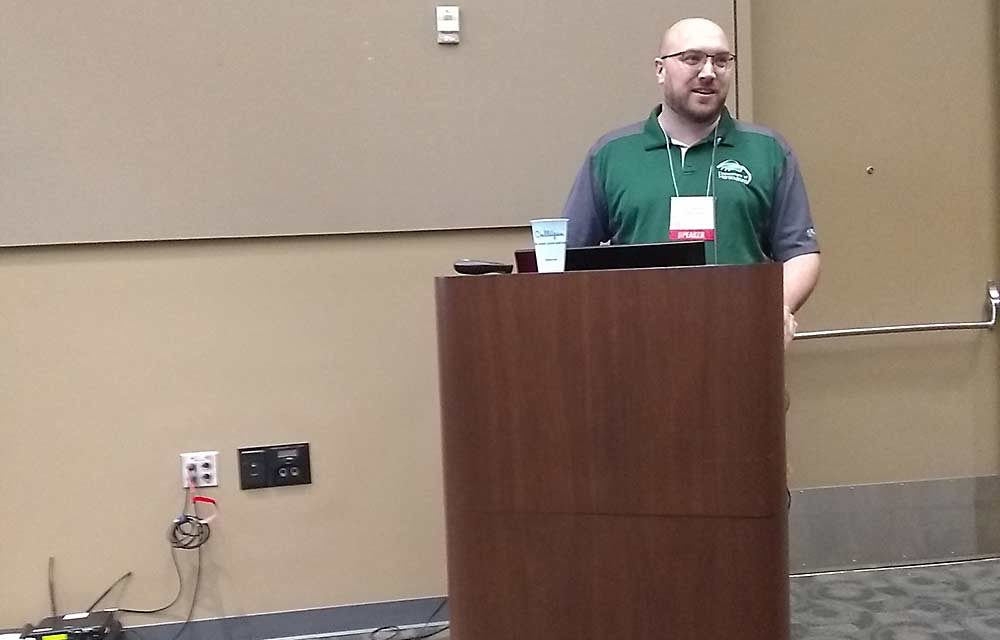Hard cider varieties and red-fleshed apples were the focus of one of the fruit educational sessions during day three of the 2019 Great Lakes Fruit, Vegetable & Farm Market EXPO in Grand Rapids, Michigan.

Christopher Gottschalk, a graduate research assistant at Michigan State University, discussed hard apple cider varieties and the university’s red-flesh breeding program. Following are some of the points he made:
—MSU established a small trial planting and expanded it with help from grants. The trial is now over an acre in size.
—The goal is to figure out which hard cider varieties grow best in Michigan.
—Apples were collected from USDA malus germplasm collection, with about an even split between sweets, sharps, bittersweets and bittersharps.
—All sorts of interesting results; a lot of blind wood on some cultivars; some fifth-year trees haven’t yet borne fruit.
—Replicated trials throughout Michigan on a wide scale, comparing same genotypes across varied environments.
—Will evaluate production, rootstock/scion compatibility, maturity, quality and cider-specific traits.
—Trying to quantify cider-specific traits: juice yield, brix, pH, TA and tannin content.
—A new website, ciderapples.msu.edu, houses the cider apple trait database. Click on any variety to learn more.
—Rosé ciders and red-fleshed apples are a burgeoning part of the industry and they’re seeing them everywhere.
—MSU work on red-flesh varieties started about 10 years ago. They’ve tried to identify all red-fleshed apples around the world and found hundreds. The Otterson variety, for example, has red flesh and mature fruit aroma.
—by Matt Milkovich






Leave A Comment